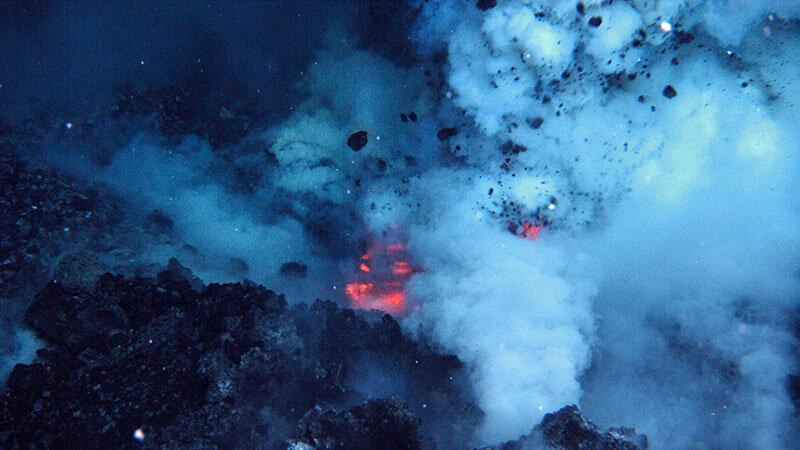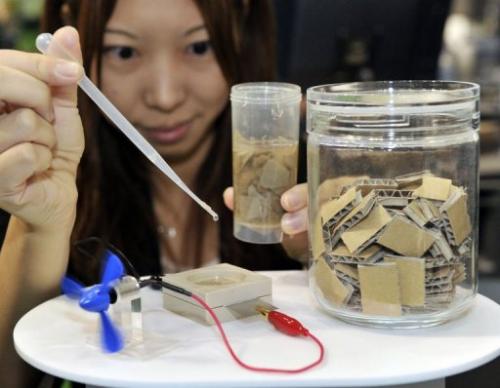Seaweed
One of the ways humanity is beginning to combat dwindling energy reserves is
One of the fuel sources of the future isalgae are small aquatic organisms that convert sunlight into energy and store it as oil. Scientists and engineers around the world are researching the best strains of eukaryotic algae and developing the most efficient farming methods.
This rapid production potential is combinedwith the potential to produce an infinite amount of biomass leads to a theoretically infinite source of energy. More renewable than oil, coal and gas, anyway, and here's why.
Microalgae are tiny, unicellularplants that grow in the sea and capture carbon through photosynthesis. These plants were once a prehistoric source of crude oil that is extracted from the earth's crust today. Millions of years ago, the flowering algae died and sank to the seabed. Eventually, the high pressure and temperature of the earth's crust turned the remnants of microalgae into crude oil. Today, biofuels derived from algae are trying to accelerate this process by creating the conditions necessary to extract oils from microalgae lipids.

Algae began to be considered asalternative energy source is relatively recent, but the technology, according to experts, is very promising. Suffice it to say that from 1 hectare of water surface area occupied by algae, 150 thousand cubic meters of biogas can be obtained per year. This is approximately equal to the volume of gas that a small well produces, and is enough for the life of a small village.
Green algae are easy to maintain, fastgrow and are represented by many species that use the energy of sunlight for photosynthesis. All biomass, be it sugars or fats, can be converted into biofuels, most often bioethanol and biodiesel. Algae is an ideal eco-fuel because it grows in an aquatic environment and does not require land resources, is highly productive and does not harm the environment.
This type of fuel still has limitations.
For more than five years, starting approximatelySince 2005, algae biofuel companies including Algenol, Sapphire Energy and Solazyme have attracted hundreds of millions of dollars in private sector investment, promising that chemically engineering algae could increase production of dozens of species. seaweed millions of gallons of fuel over several years at prices competitive with fossil fuels. Algae fuel conversion is primarily based on the high concentration of lipids in the feedstock: fatty, oil-containing acid molecules that can be extracted to create biofuels.
Almost 15 years later, the world of green technologyfell out of love with algal biofuels. Despite the large sums spent developing the conversion process, the industry's ambitious production goals—not to mention fossil fuel price competitiveness—remain a distant dream. From a cost perspective, the significant decline in oil prices in 2008 and 2014 certainly did not improve the competitiveness of biofuels, but technical problems also proved to be a major stumbling block. Intractable problems have arisen in terms of the energy balance of lipid extraction, maintaining suitable growing conditions in open ponds, and the enormous volumes of water, CO₂ and fertilizers required for the algae to photosynthesize quickly enough on a large scale.
Volcanoes
One of the main developments in masteringThe volcanic energy is owned by American researchers from the initiating companies AltaRock Energy and Davenport Newberry Holdings. The research was carried out on a dormant volcano in Oregon, USA. The salt water was pumped deep into the rocks. Due to the decay of radioactive elements and the hottest mantle of the Earth, the temperature in the interior is very high. When heated, the water turned into steam. It is fed to a turbine, which generates electricity.
To date, there are still twooperating power plants that use this technology. One is in France and the other is in Germany. In general, according to the US Geological Survey, geothermal energy is potentially capable of providing 50% of the country's electricity needs (today its contribution is only 0.3%).
Another way to use volcanoes forenergy production was proposed in 2009 by Icelandic researchers. Near the volcanic depths, they found an underground reservoir of water with an abnormally high temperature. Very hot water is somewhere on the border between liquid and gas and only exists at a certain temperature and pressure.
 Mato West Volcano erupts in 2009.Image courtesy of the National Oceanic and Atmospheric Administration. Credit: National Oceanic and Atmospheric Administration.
Mato West Volcano erupts in 2009.Image courtesy of the National Oceanic and Atmospheric Administration. Credit: National Oceanic and Atmospheric Administration.
Scientists could generate something similar inlaboratories, but it turned out that such water is found in nature - in the bowels of the earth. It is believed that 10 times more energy can be extracted from water of "critical temperature" than from water brought to a boil in the classical way.
Moreover, a recent study showedthat volcanic eruptions deep in the oceans can produce extremely powerful bursts of energy at a rate sufficient to power the entire United States.
For a long time it was believed that the eruptionsdeep-sea volcanoes are relatively uninteresting compared to land-based eruptions. Although land-based volcanoes often cause spectacular eruptions by scattering volcanic ash in the environment, it was believed that deep sea eruptions only caused slow-moving lava flows.
But data collected remotelymanned vehicles deep in the north-east Pacific Ocean and analyzed by scientists from the University of Leeds have revealed a link between the way ash is dispersed during submarine eruptions and the formation of large and powerful columns of heated water rising from the ocean floor known as megaplumes.
These megaplumes contain hot, richchemicals in water and act in the same way as the atmospheric plumes seen from land-based volcanoes, spreading first upward and then outward, carrying volcanic ash with them. The size of the megaplumes is enormous, with a volume of water equivalent to forty million Olympic-sized swimming pools. They have been discovered above various undersea volcanoes, but their origin remains unknown. The results of a new study by scientists from the University of Leeds show that they form quickly during lava eruptions.
The researchers developed a mathematical modelwhich shows how the ash from these underwater eruptions spreads several kilometers from the volcano. They used the structure of ash from the historic submarine eruption to reconstruct its dynamics. This showed that the rate of energy release required to transport ash over the observed distances was extremely high—equivalent to the power used by the entire United States.
Paper
Technology created in Japan by Sonygenerates electricity by converting shredded paper into sugar, which in turn is used as fuel. The team behind the project said such bio-batteries are environmentally friendly as they do not use harmful chemicals or metals.
The process is based on the use of an enzymecellulases for the decomposition of materials into glucose sugar. They then combine with oxygen and other enzymes that convert the material into electrons and hydrogen ions. In the project, electrons were used by a battery to generate electricity. Water and acid gluconolactone, which is commonly used in cosmetics, were created as by-products.

The researchers involved in the project comparedthis is a process with a mechanism that termites use to digest wood and convert it into energy. Their work builds on a previous project in which they used fruit juice to power their Walkman music player.
The chain is broken by enzymes, andthe resulting glucose is processed by another group of enzymes, with the help of which hydrogen ions and free electrons are released. Electrons are channeled through an external circuit to generate electricity. It is assumed that such a plant, during the processing of one sheet of 210 x 297 mm paper, can generate about 18 watts per hour (about the same amount of energy is generated by 6 AA batteries).
The method is environmentally friendly:an important advantage of such a "battery" is the absence of metals and harmful chemical compounds. Many years have passed since the presentation of the project, but the technology is still far from commercialization: electricity is generated quite little - it is only enough to power small portable gadgets.
What's the bottom line?
People use fossils as their main sourceenergy. The problem is that sooner or later, in theory, they may end. But people may not survive until this moment due to global warming and climate change. Scientists and enthusiasts are looking for new sources of energy every day. Not all of them are obvious and will become commercially successful immediately, but working in this direction is already progress that can help our existence. Time to cast a wide net.
Read more
The first accurate map of the world was created. What's wrong with everyone else?
See streams of Martian dust from the Ingenuity helicopter
Ingenuity helicopter successfully takes off on Mars
Cellulase - an enzyme belonging to the classhydrolase that catalyzes the hydrolysis of β-glycosidic bonds in cellulose with the formation of glucose or cellobiose disaccharide. It is found in sprouted grains, mushrooms, many bacteria, and also in a number of animals that feed on wood.
Gluconolactone is a polyhydroxy acid (PHA), which is obtained as a result of the oxidation of glucose (a natural sugar found, among other things, in the human body).
Termites, or white ants, - infraordersocial insects with incomplete transformation, related to cockroaches. Despite the name "white ants", they are not ants, although in many respects they are similar to them in their way of life.